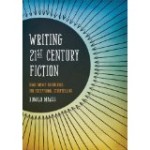Before I start in on fixes, let me remind everyone that there are only two kinds of writing: Writing that works and writing that needs work. This means if you can write any of the identified “ailments” and make the reader still care, make him stay up all night reading, make her love your story, then go for it.
Writing Tip for Today: For most of the rest of us, the following scenarios will probably be ailments instead of advantages:
- Driving to the Story. As we discussed last post, if you open a novel with a character traveling back to a place, the travel itself isn’t a story. What happens after the character arrives is where the real story begins. Fix: Scroll ahead to the second or third chapter. Ask yourself how you could weave all the BS (back story) into the scene where the actions truly starts. Many times the answer is to chop off those “telly” openings and begin with the action.
- Back Story of Death.While we’re on the subject, you have no doubt heard that back story, especially at the beginning of a novel, should be nonexistent or in very short doses. And don’t forget about the Cold Mashed Potato Rule. If, while your real time scene is that of character A eating dinner, her mind reels back (please don’t write this), the longer you stay in the back story time, the colder the mashed potatoes become. Which is a way to say that your reader will forget about the dinner scene if they are stuck in the past for very long.
- Character Descriptions without the Mirror. Beginners often have characters standing before a mirror as a way to describe to the reader what that character looks like. Variations include car rear and side view mirrors, a lake or other pool of water or even a metal surface. Think of a more creative way to tell your reader about Character A. And trust me, your reader doesn’t care nearly as much about what characters look like as what they say and do.
- Sittin and Drinkin. Don’t allow many scenes where your characters sit around a table drinking something. Although we do this a lot in real life, in fiction it reads as no movement except for the occasional lift of cup to lips. Get your characters moving something more than their mouths. A “table” scene is a convenient way to write a lot of dialogue. The total experience depends on much more.
- Sittin and Thinkin. When your main character is the only person in a scene, movement and dialogue become problematic. This is another one of those convenient tools to write a lot of Back Story. Get someone else on stage as often as possible, even if it’s a pet. Remember Wilson the soccer ball from Tom Hanks’ “Cast Away?” A clever way to get Hanks’ character involved in action and dialogue despite being marooned on a desert island.
These are only a few of the problems you might encounter, but they all have fixes.




